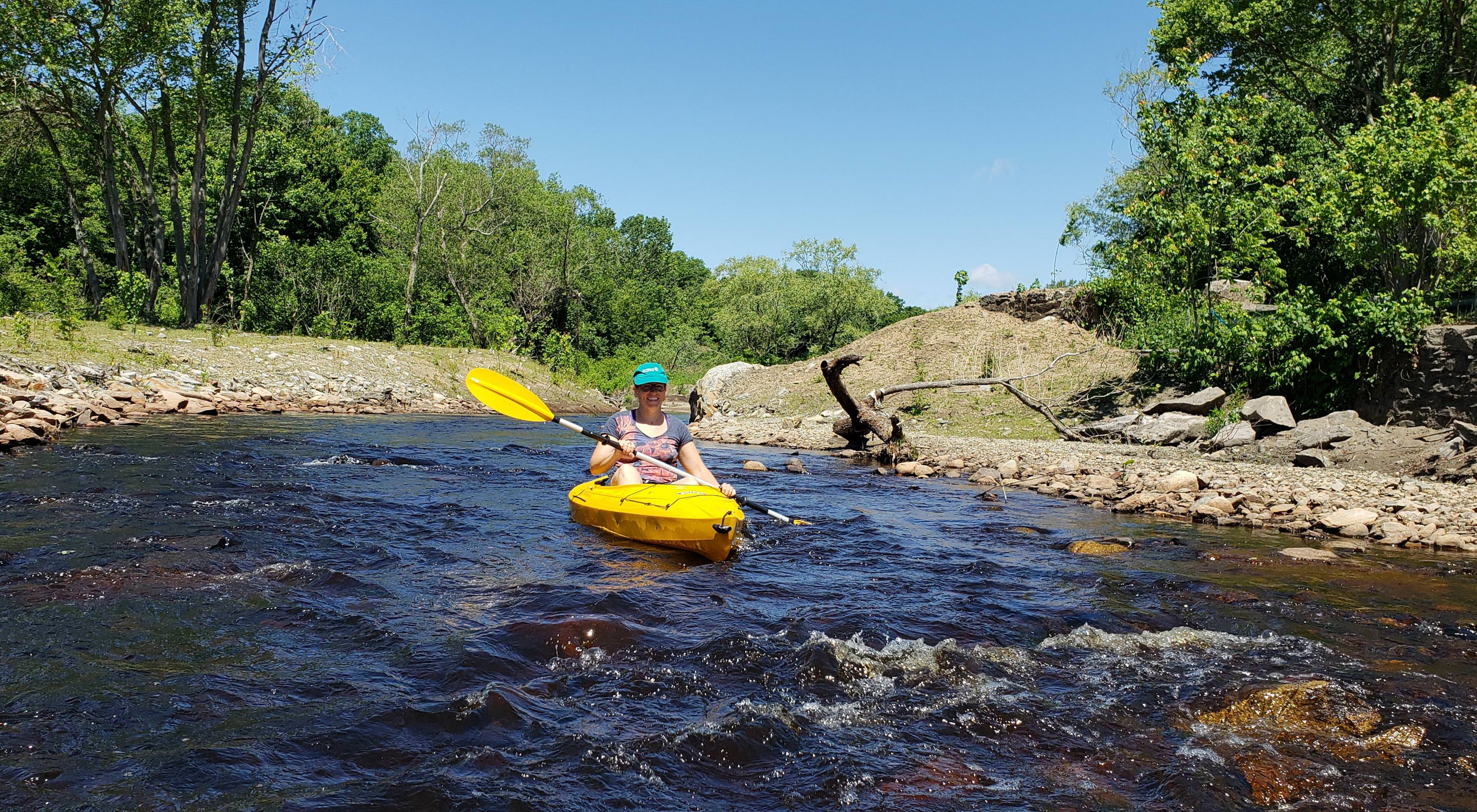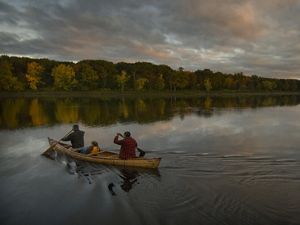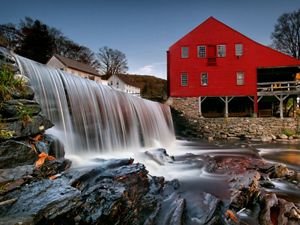What a River Means
At one point, the Mill River was declared "dead." Now, alewife are running the river again for the first time in two centuries.
The Mill River is very much alive.
To someone living in Taunton a century ago, the renewed health of the river—which flows through the city’s downtown before emptying into the Taunton River and eventually Narragansett Bay—would likely come as a surprise.
In 1921, a Massachusetts state report declared the Mill River dead, at least as far as alewife were concerned. These fish had once spawned in the river in mindboggling numbers. “Since it is badly polluted by manufacturing wastes and obstructed by dams, the reestablishment of the old fishery is an impossibility,” the report concluded.
Yet today, after more than 15 years of work to remove the dams that obstructed the river, spawning alewife have been documented on it for a decade, and the larger Taunton River watershed system is remarkably vital.
“Our investment in the restoration of the Mill River is having a positive impact on fish recovery, the overall health of the watershed and community safety,” says Alison Bowden, who initiated The Nature Conservancy’s part in this ambitious project and directly led it for many years.
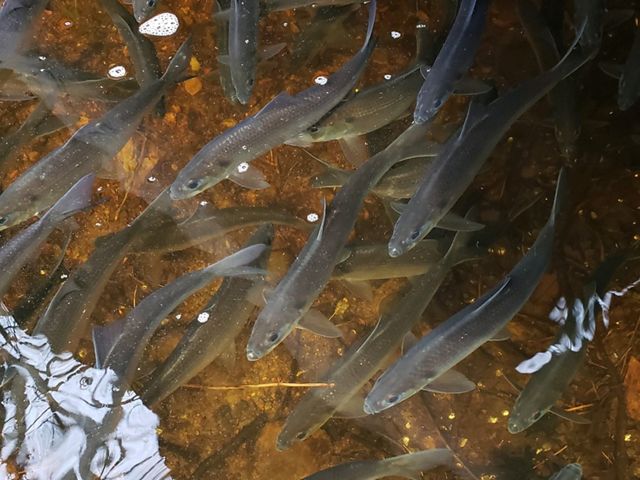
A Long Time Coming
Taunton earned its historic moniker “Silver City” from industries that set up shop near the Mill River downtown. There were four dams within one mile when the idea of a Mill River restoration project first gained traction in the mid-2000s. By then, none of the dams had supported industrial uses in decades.
Rendered obsolete with the decline of heavy industry in the area, the dams sat there, blocking spawning fish from upstream habitat and creating largely useless impoundments that were often filled with badly polluted sediment and more.
Then came the near-failure of the Whittenton Mill Pond Dam during heavy flooding in 2005. Authorities evacuated downtown Taunton at the cost of about $1.5 million. While the dam did not fail, and emergency measures were taken to stabilize it, the event helped catalyze the Mill River restoration partnership, which involved conservation organizations, state and federal fisheries and wildlife agencies, the City of Taunton and local planners.
The partnership took out Whittenton Mill Pond Dam and nearby Hopewell Mills Dam, while the Massachusetts Department of Transportation constructed a fish ladder at an additional site in 2013. That year, an underwater camera spotted the first alewife running up the river in two centuries, one of roughly 1,000 that would migrate upstream to spawn that season.
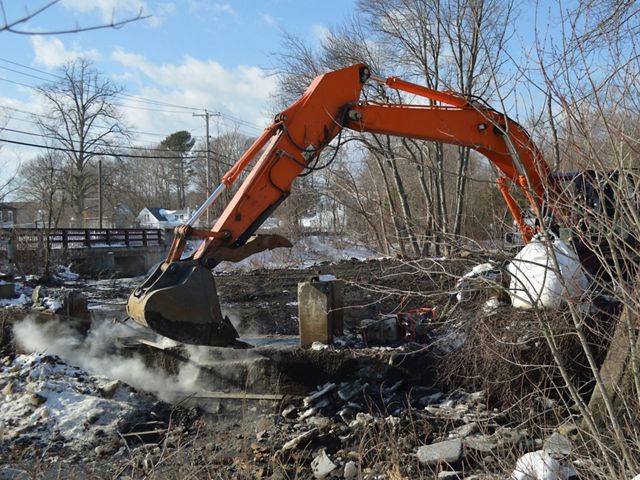
Then, many of hours of work later, in winter 2017-18, TNC in Massachusetts and partners took out the 85-foot long West Britannia Dam. It was the culminating action of the initiative. The dam removals on the Mill River reconnected 30 miles of river and 560 acres of spawning habitat with the larger Taunton system.
“It’s amazing. You can put in a boat in downtown Taunton and take it out to Providence or Narragansett if you want to,” Bowden says. “There’s nothing in the way.”

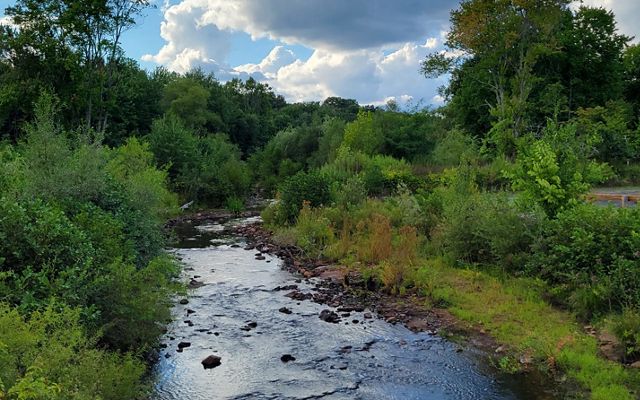
The River to Recovery
Following the West Britannia Dam Removal in 2018, the partnership monitored river quality and species populations for five years, wrapping up at the end of 2022. During the 2021 migration season, more than 30,000 river herring ran up the Mill River. Gizzard shad, American eels, sea lamprey and other species were also seen.
River herring were the most abundant fish species observed, and video monitoring from the fishway at Morey’s Bridge Dam over the last five years documented steadily increasing numbers of these migratory fish reaching Lake Sabbatia at the top of the Mill River. 11 species of fish, three species of turtle, and otters were seen using the fishway.
“Water quality and instream habitat also improved, as did water and sediment flows,” says Bowden. “These data show the impact of restoration efforts and will inform future work in the region.”
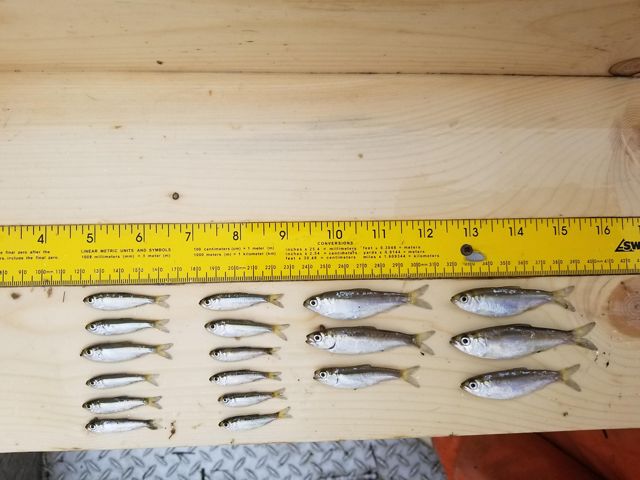
In the larger Taunton River system, monitoring has confirmed that American shad are spawning, and there have been numerous river otter sightings. And research from the University of Massachusetts - Amherst shows that dam removal leads to reduced water temperatures at the site or increased access to cooler waters upstream. In the face of climate change, greater availability of cool water areas helps species that rely on those conditions find refuge during hotter periods.
The results seen in the Taunton River watershed are mirrored in other river systems across the state. Massachusetts saw its highest river herring returns in three decades in 2019—four runs had over half a million fish migrating.
“The Mill River and Taunton River Watershed restoration is a great case study for understanding the benefits of watershed-scale efforts over opportunistic individual project selection,” says Kate Abbott, a Ph.D. candidate at UMass Amherst who researches dam removals in the state. “It’s valuable for our ecological understanding of the cumulative effects of restoration, but also as an example of what good coordination and partnership can accomplish.”
Growing this understanding of which restoration actions ensure self-sustaining fish populations is key, as river herring are a critical link in the coastal and ocean food web. On the ocean side of their habitat, TNC is also working to improve the health of migratory river herring when they’re at sea by studying the location and timing of unintentional bycatch of these fish and trying to help fishermen avoid the large schools of alewife and blueback herring.

A Whole System
The year 2018 marked more than just the return of spawning alewife in the Mill River. The City of Taunton also opened the Weir Village Riverfront Park on the Taunton River, downstream from the Mill River’s confluence with it. A stunning beautification of the former industrial site of F.B. Rogers Silver Co., the park features a 1,000-foot-long waterfront walkway, a boat and kayak ramp and a fishing pier.
It also includes strategically placed raingardens, a nature-based solution in which soils and plants help absorb and filter stormwater run-off from a parking lot and nearby street. TNC was proud to have played a role in supporting—with funding from the Massachusetts Department of Environmental Protection—the creation of the raingardens.
Quote: Donna Desrosiers (Spirit Fox)
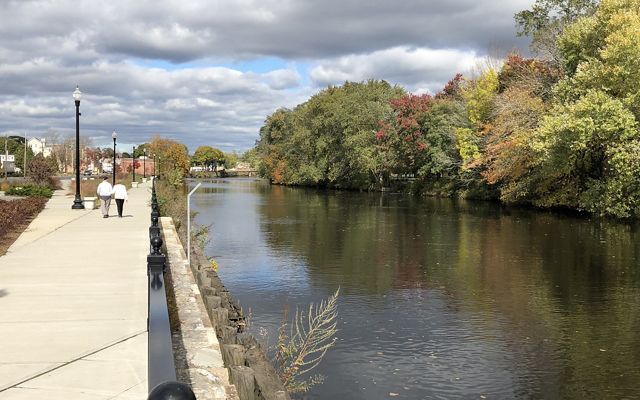
Now, people come from all over to utilize the river. The new boardwalks along the water and the drop-in areas for kayaks and canoes—it's great that access has opened up and it's easier for people to connect with the river.
“There is still a lot of work to do,” Bowden says. “But this is a time when we all should celebrate.”
That’s a sentiment echoed by Roger Desrosiers and Donna Desrosiers— also known as Gray Fox and Spirit Fox—who represent the Dighton Intertribal Indian Council on the Taunton Wild and Scenic River Stewardship Council. The Taunton River was added to the National Wild and Scenic Rivers System in 2009.
“Now, people come from all over to utilize the river,” says Donna Desrosiers. “The new boardwalks along the water and the drop-in areas for kayaks and canoes—it’s great that access has opened up and it’s easier for people to connect with the river.”
Roger adds: “The Taunton River was the Natives’ highway. It connected towns up and down the area. It’s great to see it being used like that again.”
Learn more about our work across Massachusetts!
Subscribe to our monthly e-newsletter
